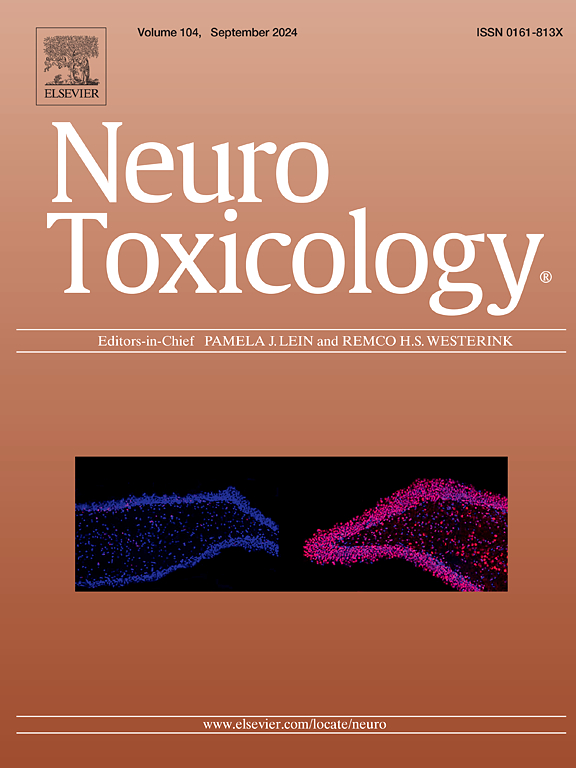单胺消耗和氧化不平衡是氯胺酮诱导的青春期大鼠运动缺陷的基础。
IF 3.9
3区 医学
Q2 NEUROSCIENCES
引用次数: 0
摘要
氯胺酮作为一种娱乐物质被青少年和年轻人在夜总会和狂欢中广泛使用,尤其是在周末。鉴于青少年娱乐性氯胺酮对中枢神经系统(主要与运动功能有关)的有害影响缺乏证据,本研究旨在探讨氯胺酮使用对运动功能的行为、生化和神经化学影响,评估早期戒断时运动皮质、小脑和纹状体的影响。青春期雌性Wistar大鼠(28日龄)给予氯胺酮(10mg/kg/d)鼻灌,连续3 d。氯胺酮给药24小时后,分别进行开阔场地、斜面、杆状、旋转杆等行为试验。行为分析结束后,对动物进行麻醉和安乐死,收集运动皮质、小脑和纹状体进行生化和单胺评估。我们发现,在青春期早期接触氯胺酮会导致自发运动减少、运动不平衡和与氧化应激相关的运动迟缓,并降低纹状体区域的神经递质水平,特别是多巴胺、去甲肾上腺素和血清素。这些结果表明,在青春期早期以暴食方式娱乐性使用氯胺酮,在戒断的最初阶段会出现广泛的运动功能损伤,运动区域的氧化损伤和纹状体的神经递质减少可能导致所观察到的行为改变。本文章由计算机程序翻译,如有差异,请以英文原文为准。
Monoamine depletion and oxidative imbalance underlie ketamine-induced motor deficits in adolescent rats
Ketamine has been widely used as a recreational substance by adolescents and young adults in nightclubs and raves in an acute manner, especially during the weekend. Considering the scarcity of evidence on the harmful consequences of adolescent ketamine recreational use on the central nervous system, primarily related to motor function, this study aimed to investigate the behavioral, biochemical, and neurochemical consequences on motor function induced by ketamine use, evaluating the motor cortex, cerebellum, and striatum in early abstinence. Adolescent female Wistar rats (28 days old) received ketamine by intranasal route (10 mg/kg/day) for 3 consecutive days. Twenty-four hours following the ketamine protocol, the animals were subjected to behavioral tests in the open field, inclined plane, pole, and rotarod tests. After behavioral assays, the animals were anesthetized and euthanized for the collection of the motor cortex, cerebellum, and striatum for biochemical and monoamine evaluations. We found that ketamine exposure in early adolescence induced a reduction in spontaneous locomotion, motor imbalance, and bradykinesia associated with oxidative stress and a decrease in neurotransmitter levels, particularly dopamine, norepinephrine, and serotonin in the striatal region. These results demonstrate that ketamine recreational use in a binge pattern in the early adolescence period displays a widespread motor function impairment during the first periods of withdrawal, which oxidative damage in motor areas and neurotransmitter reduction in the striatum may contribute to the behavioral alteration observed.
求助全文
通过发布文献求助,成功后即可免费获取论文全文。
去求助
来源期刊

Neurotoxicology
医学-毒理学
CiteScore
6.80
自引率
5.90%
发文量
161
审稿时长
70 days
期刊介绍:
NeuroToxicology specializes in publishing the best peer-reviewed original research papers dealing with the effects of toxic substances on the nervous system of humans and experimental animals of all ages. The Journal emphasizes papers dealing with the neurotoxic effects of environmentally significant chemical hazards, manufactured drugs and naturally occurring compounds.
 求助内容:
求助内容: 应助结果提醒方式:
应助结果提醒方式:


